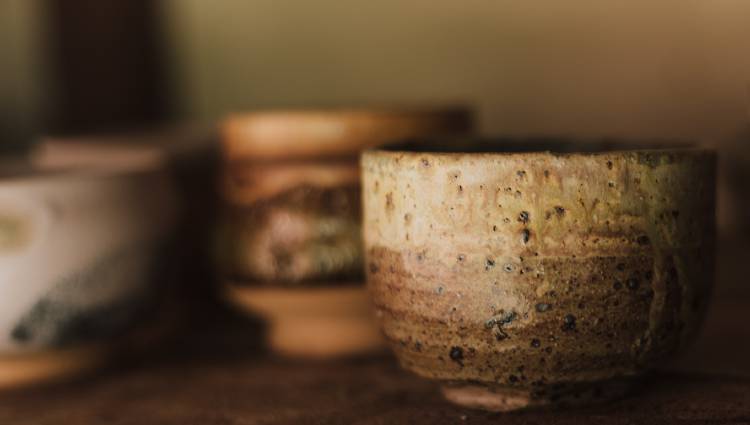The words ‘pottery’ and ‘ceramics’ are often used to refer to the same thing. For example, you might say that you are taking a ceramics class. Equally, you could say you’re taking a class in pottery. But, what is the difference between pottery and ceramics?
The term ceramics can be used broadly to refer to objects that are non-metallic and inorganic. Ceramics have uses in many areas from science to medicine. In the world of pottery, ceramics are often said to be decorative, whereas, pottery is thought to refer to functional vessels and containers.
But these definitions are not clear cut and there is more to the difference between ceramics v’s pottery than whether an object is decorative or practical.
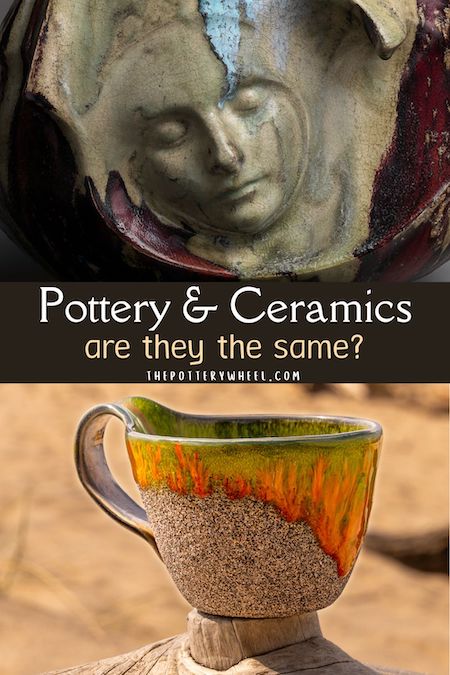
The Difference Between Pottery and Ceramics – A Closer Look
Let’s start by taking a look at each of the terms individually and highlighting the differences and similarities.
What Is Ceramics?
The term ‘ceramics’ is broad, and its meaning depends a bit on the context in which it’s used. For example, in scientific circles, ceramic material is considered to be any substance that is non-metallic and inorganic. Inorganic means it doesn’t derive from living matter or contain carbon.
This is a wide definition, and from this perspective, ceramics includes everything from brick and cement to diamonds.
From a practical point of view, ceramics have a broad range of uses too. Ceramic material is made to manufacture everything from toilet bowls to components in an electrical fuse.
The reason ceramic material has such a wide number of applications is that it has a unique combination of qualities. Some of these qualities include:
- Strength – ceramic material can be strong and durable
- It is refractory – which means it can withstand high temperatures without melting
- It is not vulnerable to chemical corrosion
- Non-magnetic
- Poor electrical conductivity – which explains its use in electrical fuses
Because of these qualities, ceramic material has lots of industrial and even medical applications. For example, ceramics are used in dentistry in the form of replacement teeth and surgically in the form of replacement joints (source).
However, there are other meanings of the word ceramics. It has a narrower definition which is often used in a more artistic context and is connected to the production of pottery.
Ceramics Definition
The word ‘ceramics’ was originally spelled ‘keramics’ and it has its origins in the Greek word ‘keramos’. Keramos means both potter’s clay and pottery ware (source). So, the original meaning of the word ceramics was closely bound to the making of pottery.
Let’s put the industrial and medical uses of ceramics to one side and focus on what it means in the world of pottery. What does it mean to be ceramic? Ceramic material is clay that has been fired in a pottery kiln. During the firing process, the pot is transformed from clay to ceramics.
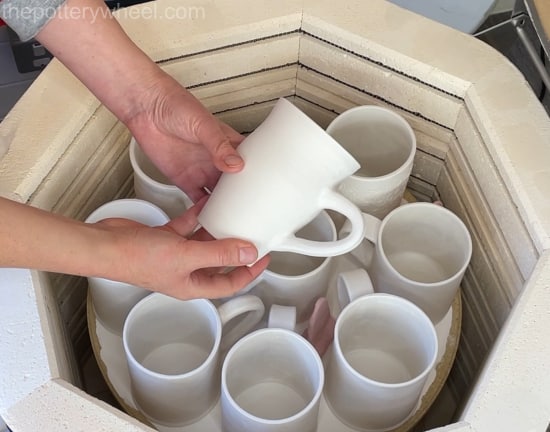
Usually, pottery is fired twice. The first fire is called the bisque fire. When the pottery is loaded into the kiln for the first time, it’s made of clay. At this point, the clay is soluble, which means that if you put it in water it would break down and dissolve back into moist workable clay.
During a bisque fire, the kiln reaches about 1828F (998C). As the clay is heated in the kiln, it undergoes chemical and physical changes that transform it into ceramic material. Any moisture left in the clay is driven out, and the clay particles move closer together and become bonded to form a rigid structure.
When pottery is removed from the bisque fire, it is no longer soluble. Instead, the clay has been turned irreversibly into a hard material. It is still porous in that it will absorb water, but it won’t dissolve anymore. At this point, the clay is said to have become ceramic. So, that is the difference between ceramic vs clay.
Ceramic Art
Ceramic art is made from clay that has been turned ceramic through firing. It can include lots of different types of artwork. This can include everything from sculptures to figurines and decorative wall friezes.
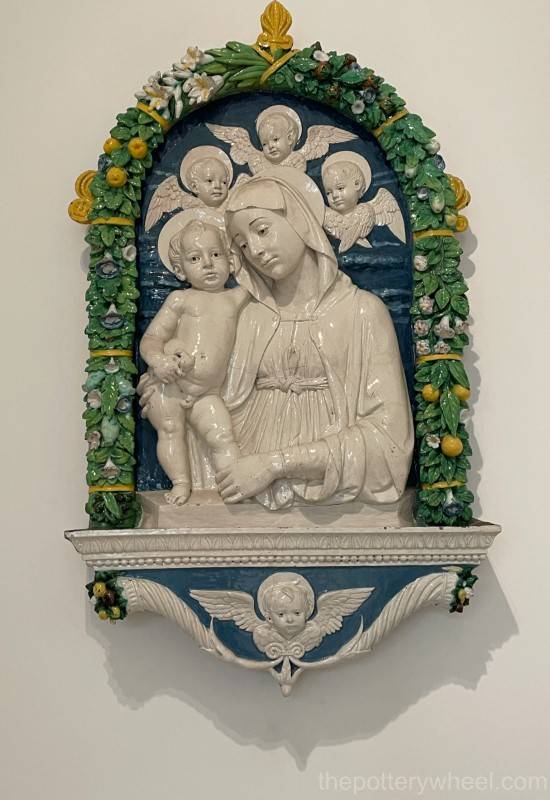
On display at The V&A
It’s often said that ceramics is a broad umbrella term and that pottery sits under the umbrella as a type of ceramics. So, what exactly is pottery?
Pottery Definition
Pottery is sometimes defined as being clay work that has the following two qualities:
- It is the production of pieces that are mainly vessels or containers
- It is functional ware, meaning that it isn’t purely decorative, it can be used as well
The sorts of items that have these properties are mugs, bowls, plates, pitchers, and vases. These items are different from something like a ceramic sculpture which is designed mainly to be looked at rather than used.
Having said that, the difference being decorative and functional isn’t always clear-cut. For example, maybe a sculpture is made to make a political statement. Doesn’t that give it a function?
Likewise, there are lots of makers who refer to themselves as potters who make containers that are designed to be looked at and enjoyed rather than used.
Ceramicist Vs Potter
This leads us neatly to the question of what makers call themselves. The term ‘maker’ has become popular partly because it avoids the issue of whether someone is creating art or making a craft.
Whether a maker prefers to call themselves a potter or a ceramicist is a matter of personal choice. Some makers like the term ‘potter’ because it reflects that they are making items that can be used for a specific purpose.
But Hamer and Hamer point out in their pottery dictionary, that the word ceramics is ‘often used by the individual potter when the name pottery seems too limiting a description of the work’.
For many potters making pots isn’t just about making things that work well. A lot of skill, time, and thought goes into making their pieces look beautiful too. And for many, the look of a piece is at least as important as how well it works.
By the way, if you are looking to define any pottery words and terms, a very good starting point is The Potters Dictionary by Hamer and Hamer. I use this reference book all the time, and if you are a pottery nerd like me, it’s a must-have.
Different Kinds of Pottery
Making pottery is an ancient practice. Humans are thought to have started making pots in the Neolithic era thousands of years ago. Over the millennia and across the world there has been a massive range of styles and traditions in making pottery.
Today, different countries and cultures within those countries have their distinctive methods and styles of pottery making.
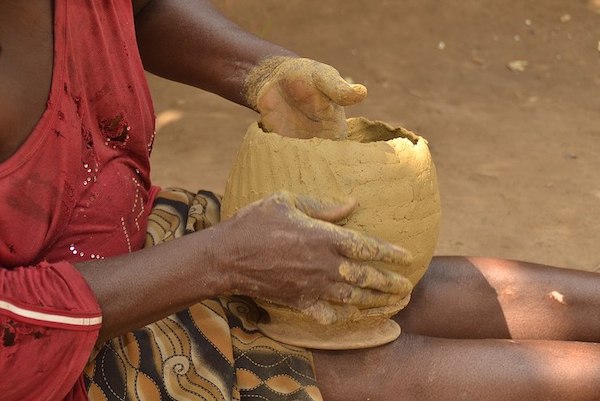
Having said that, each of these different styles of pottery can be grouped into three broad categories. They are:
- Earthenware
- Stoneware
- Porcelain
These categories refer to the type of clay that has been used to make the pottery and the temperature at which the pottery has been fired.
These days there are lots of different crafting materials available that are referred to as being ‘clay’. And not all of them contain clay.
For example, some brands of air-dry ‘clay’ don’t contain any clay particles at all. Other materials, such as polymer clay can be cured in a domestic oven. These also don’t contain pottery clay.
Pottery clay is clay that can be fired in a kiln and become ceramic. Sometimes pottery clay is called ceramic clay. Substances that are not made of clay will burn away or melt in the heat of a pottery kiln. You can read more about these non-clay bodies here.
However, earthenware, stoneware, and porcelain are all pottery clay and will transform into ceramic material when fired. Nevertheless, they have some differences that account for variations in the type of pottery they are used to produce.
The Manufacture of Pottery Clay
Pottery clay is mined from the ground. Once it has been mined, it is taken back to a processing plant, and mechanically refined in big machines.
The clay deposits found in the ground have taken thousands of years to form. These deposits are made up of fine particles of rock. Over the years, rock is weathered by the elements such as wind and rain. Tiny particles of rock-forming minerals are worn away.
Sometimes this silt is carried away by rivers and forms deposits at a different location. Clay particles that have traveled from their point of origin are called secondary clays. On their journey, secondary clays get mixed up with other impurities such as iron oxide.
These impurities give the clay that is made from the deposits particular characteristics. For example, clay that contains iron oxide, which is rust, will be red or red-brown.
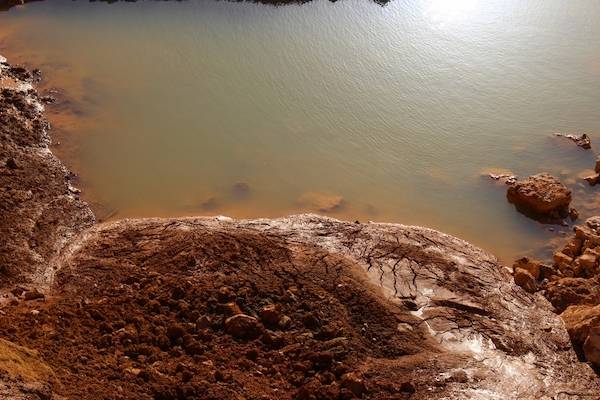
Other rock particles don’t travel in the same way, and form near to their point of origin. As a result, they don’t pick up as many impurities. These clay deposits are called primary clay.
Earthenware Pottery
Earthenware clay is an example of a secondary clay and it contains a higher percentage of impurities. If it contains iron oxide it will be red earthenware like terracotta.
Because it contains impurities earthenware clay will melt at a lower temperature than other types of pottery clay.
For that reason, earthenware clay is classified as a ‘low fire’ pottery clay. This means it is heated to a lower temperature in the pottery kiln.
Another reason that earthenware is low fire is that it contains less ‘glass forming’ materials. Clay contains silica, which is a form of glass.
When clay is fired, the silica melts and forms a liquid. As the kiln cools the silica turns solid again.
If the clay contains many glass-forming materials, the gaps between the clay particles fill up with glass. We refer to this process as ‘vitrification’. Vitrified pottery is non-porous because the gaps between the clay particles are full of glass.
Because earthenware pottery does not contain a lot of ‘glass formers’ it is still porous even when it has been turned ceramic.
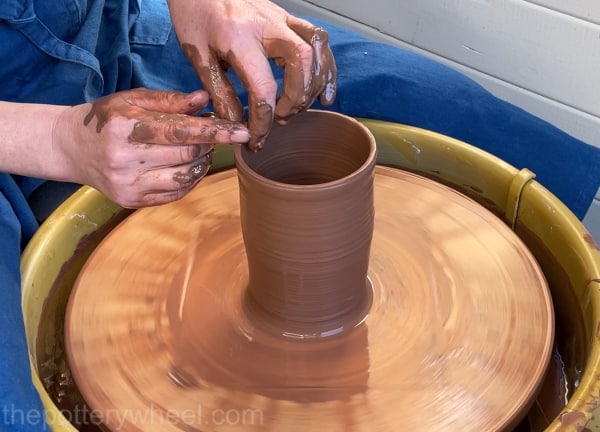
Stoneware Pottery
Like earthenware clay, stoneware clay is a secondary clay. Stoneware is a generic term used to refer to many different clays. These various clays, when fired at a particular temperature, produce a hard, vitreous (glassy, non-porous), and dense piece of pottery.
The clay itself can be made out of just a few raw materials or it can be made by combining several different kinds of clay and minerals.
The particular combination of materials used is referred to as the ‘clay body’ and will depend on what the pottery is being used for.
Stoneware pottery is Stoneware pottery fired at higher temperatures. The bisque or biscuit firing is normally around 1828F (998C), or just over that. The glaze firing is normally between 2167 and 2345F (1186 C and 1285 C).
As well as being stronger than earthenware, stoneware is also denser. An easy way to remember this is that stone is tougher than earth.
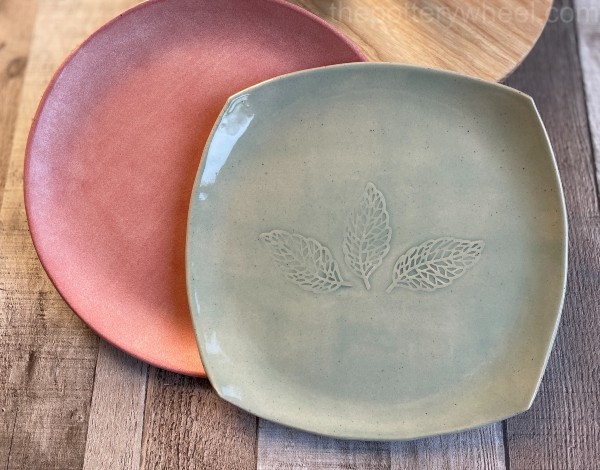
Porcelain Pottery
In contrast to earthenware, porcelain is made from a soft, white, fine, rich clay called kaolin. This clay contains the mineral kaolinite. Kaolinite is also used to give paper its glossy sheen.
Unlike earthenware which is carried far upstream, Kaoline is a residual deposit. This means that it stays at the point of formation.
As such it does not pick up many impurities. Rather it is the product of a rock that dissolves slowly with time. Kaoline is referred to as a primary clay.
Porcelain pottery has a translucent appearance and is delicate. It is made from refined clay and can be fired at a higher temperature than earthenware and stoneware. The firing temperature of porcelain is between 2167-2489F (1186 – 1365 C).
Due to being fired at such a high temperature, it is very hard and non-porous. It has a translucent appearance because vitrification at higher temperatures is more complete. This means that the porcelain piece has a more glass-like quality.
Firing Temperatures for Pottery Clay
| Earthenware | Stoneware | Porcelain |
|---|---|---|
| 1745-2012 F (950-1100 C) | 2246-2372 F (1230-1300 C) | 2192-2642 F (1200–1450 C) |
Final Thoughts
Pottery and ceramics are both broad terms. There is a huge range of types of pottery, and ceramics has uses in scientific, medical, and artistic settings.
If we focus on the artistic meaning of both words, the key difference between pottery vs ceramics is function. It’s often said that pottery refers to functional objects, in particular containers and vessels. Whereas ceramics can be applied to items that use fired clay for decorative, artistic, or conceptual purposes.
Not everyone agrees with this distinction. In the end, it’s a matter of personal choice whether you refer to yourself as a potter or a ceramicist. You may want to avoid the whole debate and call yourself a ‘maker’. Maybe we could introduce a new term. What about ‘mud magician’?

